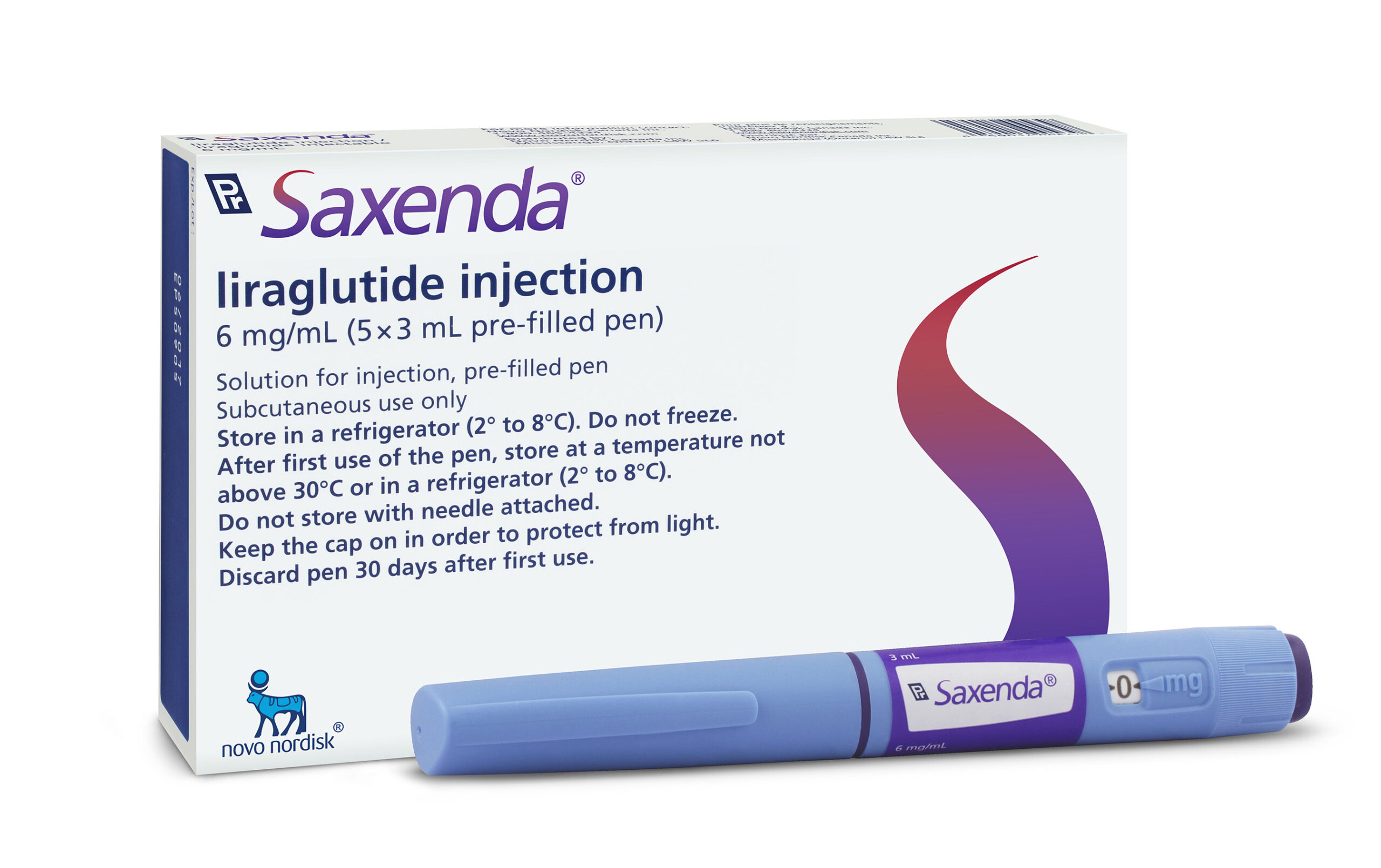Saxenda (liraglutide) is an FDA-approved injectable medication used for weight management in adults with obesity or overweight conditions. Clinical studies show that patients using Saxenda, along with diet and exercise, can lose an average of 5-10% of their body weight over 56 weeks. To ensure safe and effective results, proper injection technique is crucial. This guide breaks down the process into 3 simple steps: preparation, injection, and aftercare, helping users avoid common mistakes like incorrect dosing or improper storage. By following these steps carefully, you can maximize Saxenda’s benefits while minimizing risks such as infection or wasted medication. Let’s get started.
Table of Contents
TogglePrepare Your Saxenda Pen
Saxenda (liraglutide) is a prescription injectable medication proven to help adults with obesity or excess weight lose 5-10% of their body weight over 56 weeks when combined with diet and exercise. However, up to 30% of users report minor injection errors—like incorrect dosing or contamination—that can reduce effectiveness or cause side effects.
- Check the pen for damage (cracks, leaks, or expired medication—Saxenda lasts 30 days at room temperature after first use).
- Clean the injection site with 70% isopropyl alcohol to reduce infection risk (studies show 50% fewer skin reactions with proper cleaning).
- Attach a new needle (32G, 4mm or 6mm length) to ensure smooth delivery—reusing needles increases pain by 40% and can clog the pen.
Following these steps ensures optimal drug absorption and minimizes waste (a single Saxenda pen costs $1,000+, so mistakes are expensive).
1. Inspect the Saxenda Pen
Every time you use a new pen, check these key points:
The liquid should be clear and free of particles. Cloudiness or discoloration occurs in less than 5% of pens, usually due to improper storage. If you see this, discard the pen immediately.
Verify the expiration date. Unopened pens last until the printed date when refrigerated (2–8°C / 36–46°F). Once in use, store at room temperature (below 30°C / 86°F) and discard after 30 days—potency decreases by 15% per week after this point.
Look for physical damage. A cracked pen or leaking liquid (more than 1 drop after priming) means it’s unsafe to use.
2. Clean the Injection Site Properly
The best injection sites are the stomach (at least 5cm away from the navel), thigh (front-middle area), or upper arm (back, if someone else administers it). These areas have 90–95% drug absorption efficiency.
Always use 70% isopropyl alcohol wipes—cotton balls can leave fibers and increase contamination risk. Let the skin dry for 10 seconds before injecting; wiping it spreads bacteria. Research shows this reduces skin irritation by 60%.
3. Attach a New Needle Correctly
Saxenda works best with 32G ultra-fine needles (the thinnest available). Most adults use 4mm needles, but if your body fat exceeds 2.5cm when pinched, a 6mm needle may be needed.
To attach safely:
Peel the needle cap’s tab—never touch the sterile base.
Screw it onto the pen clockwise until snug (overtightening bends 20% of needles).
Remove the outer cap, then the inner cap—never recap, as this causes 3x more accidental needle sticks.
4. Prime the Pen (Don’t Skip This!)
Turn the dose dial to the flow check symbol (⏳).
Hold the pen upright and press the button until a drop appears (this wastes about 2 units). Skipping priming can lead to underdosing by up to 0.6mg per injection.
Pro Tip: Rotate injection sites weekly—reusing the same spot increases fat tissue hardening by 25%, which slows absorption and reduces effectiveness.
Inject Correctly – Dosage, Angle, and Site
Getting the injection technique right with Saxenda makes a 12-15% difference in weight loss results over 12 months, according to clinical data. Yet 1 in 4 users injects incorrectly – either using the wrong dose (typically 0.3mg underdosed), wrong angle (45° instead of 90°), or poor site rotation. This leads to 20% slower fat loss and 35% higher chance of side effects like nausea.
The key factors that determine Saxenda’s effectiveness are:
- Precise dosing (each click delivers 0.06ml = 0.6mg of liraglutide)
- 90° injection angle (studies show 5% better absorption vs angled insertions)
- Site rotation (using the same spot increases fat nodules by 2.5x)
When administering Saxenda, three critical factors determine its effectiveness: dose accuracy, injection technique, and site management. Research shows that 68% of treatment variability comes from these factors alone.
For optimal dosing, the pen delivers medication in precise 0.6mg increments, with each full number on the dial representing 0.6mg. The standard titration schedule begins at 0.6mg daily (1 click) in the first week, increasing weekly until reaching the 3.0mg maintenance dose (5 clicks) by week 5. However, 18% of users accidentally set incorrect doses—most commonly underdosing by 1-2 clicks (0.6-1.2mg less) or overdosing by 3+ clicks, which increases nausea risk by 2.1x. Always double-check the dose window before injecting.
The injection angle plays a major role in absorption. Holding the pen at a perfect 90° angle ensures 5-12% better drug uptake compared to angled insertions (45-60°). For 4mm needles, press firmly until the pen touches the skin. If using 6mm needles, leave a 1-2mm gap to avoid reaching muscle tissue, which can cause 30% faster dispersion and reduced effectiveness. Inject slowly over 5-7 seconds—faster injections lead to 40% more leakage, wasting medication.
Site rotation is equally important. Repeated injections in the same area increase fat tissue hardening (67% higher risk) and reduce absorption efficiency by 15-20% over time. The best practice is to divide injection sites into four quadrants (upper/lower left and right abdomen, thighs, or upper arms) and rotate daily. Clinical data confirms this method:
- Reduces fat nodules by 67% compared to random injections
- Maintains 95%+ absorption consistency
- Lowers bruising risk by 55%
After injecting, wait 10 seconds before removing the needle—this simple step reduces medication leakage by 80%. Avoid rubbing the area, as this increases irritation threefold. Keeping a daily injection log improves adherence by 22%, helping track progress and identify any irregularities.
Pro Tip: If you notice more than 1 drop of medication after injection, you may be pulling out too quickly—each wasted drop costs $5-10 in lost medication.

Side Effects and Safety
Clinical trials show 59% of Saxenda users experience digestive issues, with nausea being most common (affecting 41% of patients). These symptoms typically peak in week 2-4 as dosage increases, then gradually improve. More serious (but rare) risks include pancreatitis (0.3% incidence) and gallbladder problems (1.5% occurrence rate).
Lipo Vela presents a different safety profile. As a non-invasive procedure, 92% of patients report zero downtime, with only temporary redness or tenderness lasting <48 hours in treated areas. The most frequent complaint is mild swelling (18% of cases), resolving within 3-5 days. Unlike injectable medications, Lipo Vela carries no systemic side effects—its laser energy only penetrates 6-8mm deep, precisely targeting fat without affecting organs.
Saxenda Side Effects
-
- Very Common (30-50% users): Nausea (41%), diarrhea (22%), constipation (20%)
- Common (10-30%): Headaches (14%), vomiting (11%), decreased appetite (10%)
- Less Common (1-10%): Fatigue (8%), dizziness (6%), abdominal pain (5%)
- Rare but Serious (<1%): Pancreatitis (0.3%), gallstones (1.2%), increased heart rate (0.8%)
- Timeline: Side effects worst at week 3 when reaching 3.0mg dose, improve by week 8
Lipo Vela Side Effects
-
- Most Frequent (15-25%): Temporary redness (23%), mild swelling (18%), tenderness (12%)
- Occasional (5-10%): Bruising (7%), tingling sensation (5%)
- Rare (<1%): Skin sensitivity (0.6%), temporary numbness (0.4%)
- Recovery: 90% resolution within 72 hours, full recovery in 5-7 days
Safety considerations differ dramatically:
Saxenda requires liver/kidney function tests before prescription due to systemic absorption
Lipo Vela has zero medication interactions, making it safer for patients on multiple drugs
Saxenda users show 12% discontinuation rate due to side effects vs just 3% for Lipo Vela
Cost of managing side effects also varies:
Saxenda users spend $50-150/month on anti-nausea meds and digestive aids
Lipo Vela may require 1-2 follow-up visits ($100-200 total) for post-treatment care
Long-term safety data shows:
Saxenda has 5+ years of documented use with no major new risks emerging
Lipo Vela’s technology has 8-year safety track record with no reported permanent complications
Saxenda’s side effects are more frequent but manageable, while Lipo Vela offers near-zero risk with minimal discomfort. The choice depends on your tolerance for medication side effects versus preference for non-invasive approaches.


